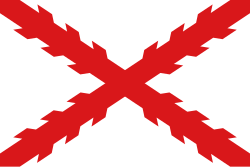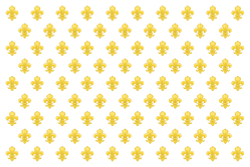Västflorida
| Västflorida | ||||
| West Florida (Engelska) | ||||
| ||||
Flagga | ||||
| Östflorida och Västflorida under den brittiska perioden, (1767). | ||||
| Huvudstad | Pensacola | |||
| Språk | Engelska | |||
| Bildades | 10 februari 1763 | |||
| – bildades genom | Parisfreden (1763) | |||
| – bildades ur | Spanska Florida | |||
| Upphörde | 1821 | |||
| – uppgick i | Floridaterritoriet | |||
| Idag del av | Florida | |||
Västflorida var en region vid Mexikanska golfens norra delar, som genom historien genomgick flera gränsförändringar. Området utforskades första gången av spanjorerna, som under 1500-talet gjorde anspråk på det. Pensacola grundades av spanske upptäcktsresanden Tristán de Luna y Arellano 1559, även om inte platsen bosattes permanent förrän 1698. Fransmännen övertog området under tidigt 1700-tal. Provinsen Västflorida skapades 1763 av britterna[1], ur de västra delarna av det som varit Spanska Florida. Västflorida bestod av det som senare koma att bli Florida Panhandle, samt delar av de amerikanska delstaterna Louisiana, Mississippi och Alabama.
Källor
- Den här artikeln är helt eller delvis baserad på material från engelskspråkiga Wikipedia, 18 maj 2013.
Fotnoter
- ^ ”Florida” (på engelska). World Statesmen. http://www.worldstatesmen.org/US_states_F-K.html#Florida. Läst 8 november 2015.
Media som används på denna webbplats
Författare/Upphovsman: previous version User:Ignaciogavira ; current version HansenBCN, designs from SanchoPanzaXXI, Licens: CC BY-SA 3.0
Flag of Spain (1785-1873 and 1875-1931)
Författare/Upphovsman: Rattyrattery, Licens: CC0
Cropped from the map 'The British Colonies in North America, 1763-1775' from the Historical Atlas by William Shepherd (1911) - available from the Perry-Castañeda Library Map Collection [1].
Författare/Upphovsman: Ningyou., Licens: CC BY-SA 3.0
Flag with the cross of Burgundy (saltire). Also named Cross of Burgundy flag. It was used in the Catholic Monarchy and in its viceroyalties such as New Spain and Peru. It was also used by Spain as a military or king's prosonal flag. Used by the Carlist movement.
US Flag with 23 stars. In use 4 July 1820–4 July 1822. Created by jacobolus using Adobe Illustrator, and released into the public domain.
Författare/Upphovsman: Wolfmaster2 for original raster, Licens: CC BY-SA 4.0
Since both West Florida flag files were still in inferior raster format, blurry and pixelized, I made the best-quality one.
Författare/Upphovsman: previous version User:Ignaciogavira ; current version HansenBCN, designs from SanchoPanzaXXI, Licens: CC BY-SA 3.0
Flag of Spain (1785-1873 and 1875-1931)
Digital reproduction of the Star Spangled Banner Flag, the 15-star and 15-stripe U.S. garrison flag which flew over Fort McHenry following the Battle of Baltimore in the War of 1812. Seeing the flag during the battle, and again the following morning, inspired Francis Scott Key's song The Star-Spangled Banner, now the U.S. national anthem. During the battle a smaller "storm flag" was flown; it was replaced by this larger flag early the next morning, which is the flag Key saw then. This larger flag is now displayed at the National Museum of American History in Washington, D.C. For several decades it remained in the family of Fort McHenry's commanding officer, before being given to the Smithsonian in 1912. The family cut pieces out of the flag from time to time as gifts.
The original flag was 42 feet long and 30 feet high, with each stripe being about two feet, and the stars being about two feet in diameter. It was made by Mary Young Pickersgill and her assistants. More info on the original dimensions here. The stars seem to mostly point to the side, except for one (the bottom right) which points down. One star has been cut out of the actual flag, so I'm guessing that originally pointed to the side as well (Fort McHenry flies a flag (File:Ft mchenry 15starflag.jpg) with a similar star pattern, but it looks like they are all to the side, and the other dimensions look similar to a modern flag). I guesstimated other dimensions and star positions based on File:Star-Spangled-Banner-1908-1919.jpg; the union (blue area) looks to be about 19 feet wide. The star rows look to be evenly distributed; i.e. the distance between the top/bottom edges and the center of a star row looks to be about the same as the distance between two (centers of) rows. Not so left-to-right; they are pretty close to the right edge and even closer to the hoist side. Also available here, page 12.A white flag sown with fleurs de lis, which served as the flag of the royal family of France according to the royal decree of Charles X of the du 11th of june 1828. Some consider it as the flag of the kingdom of France from 1815-1830, but that claim is contested.








